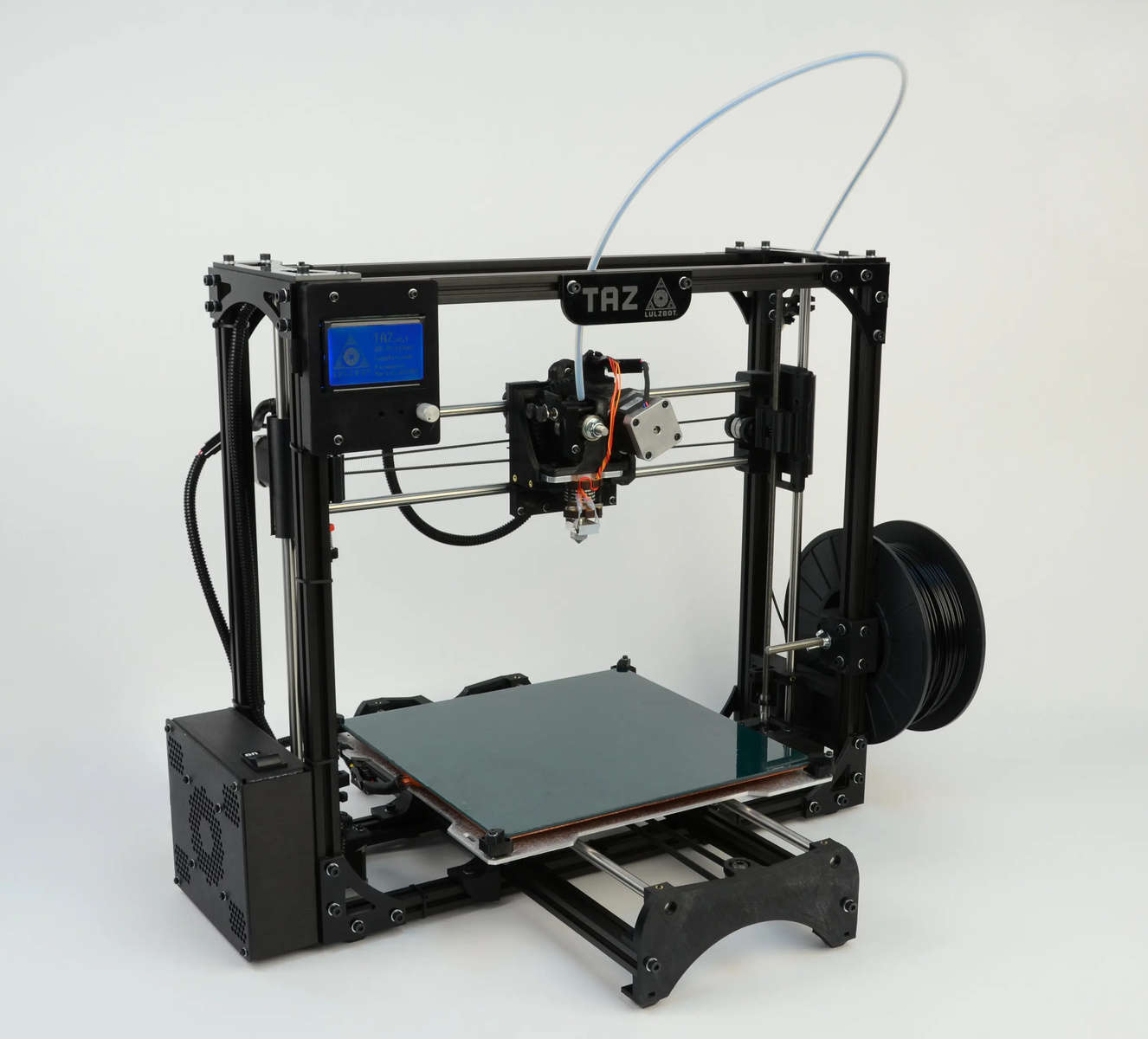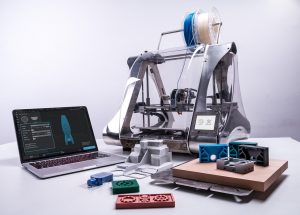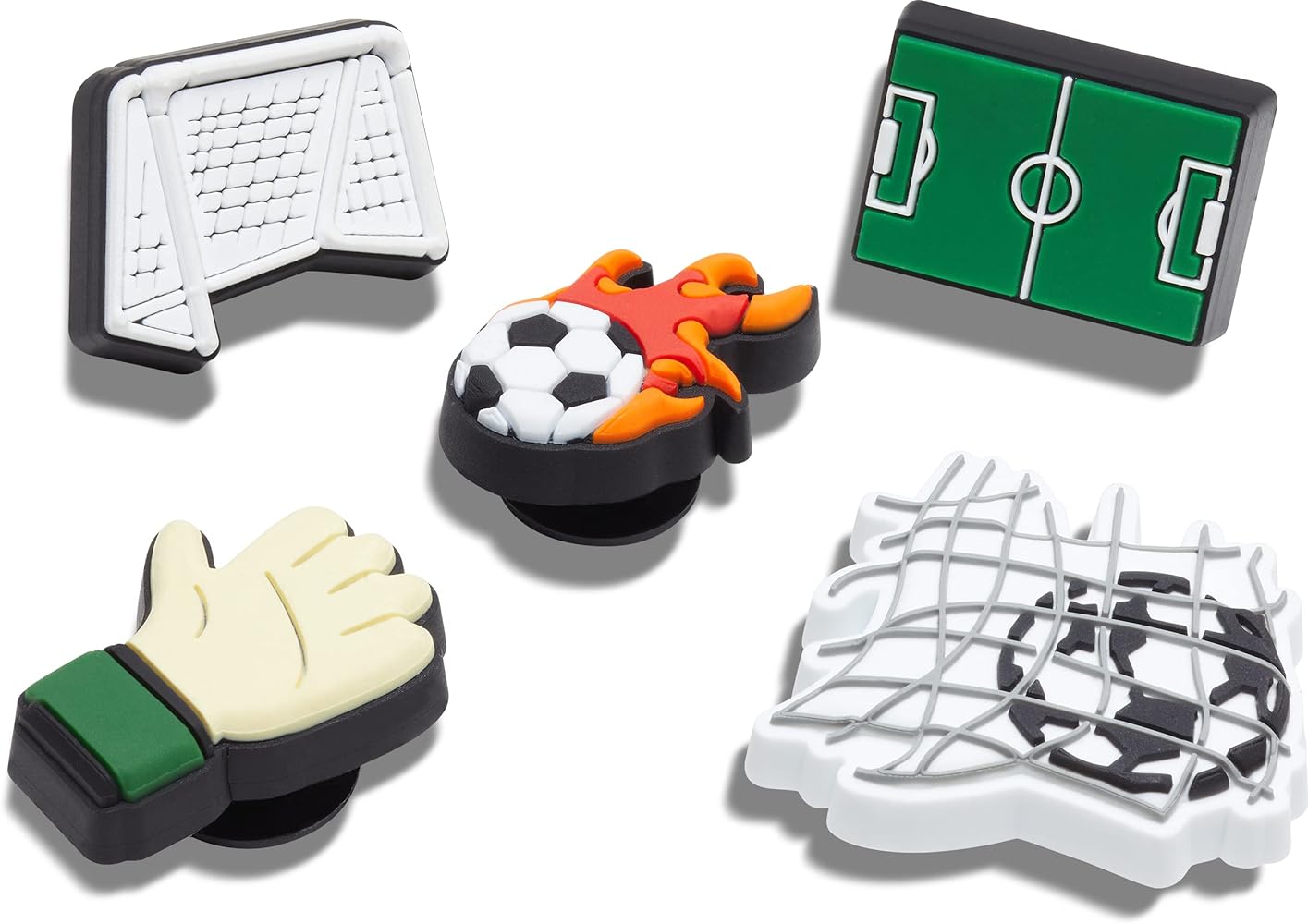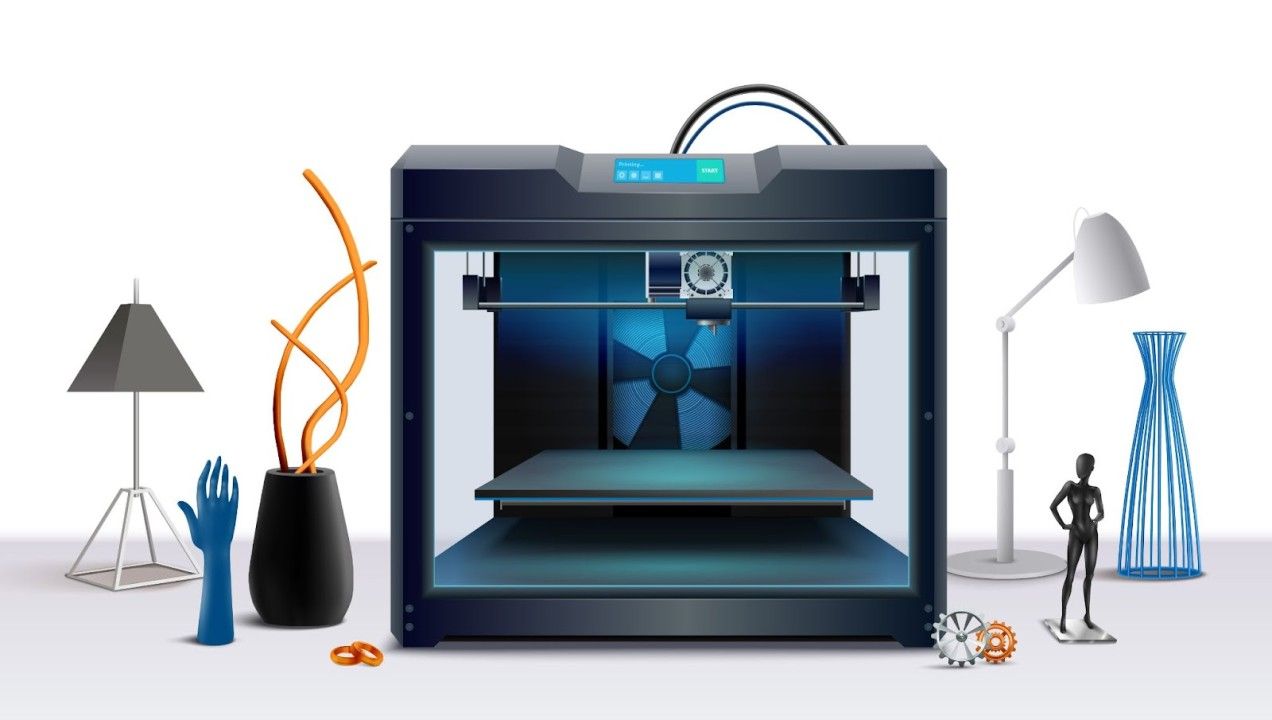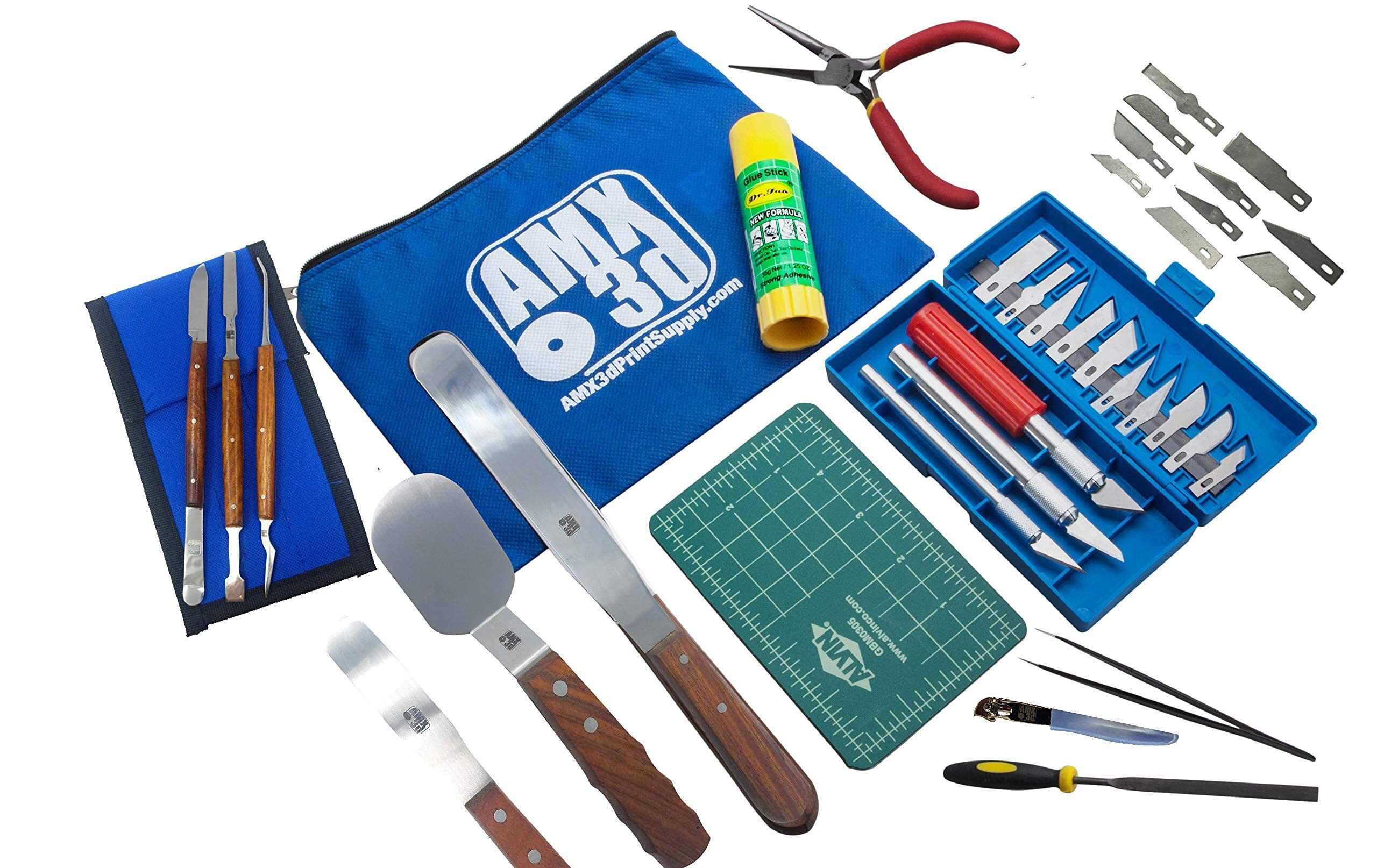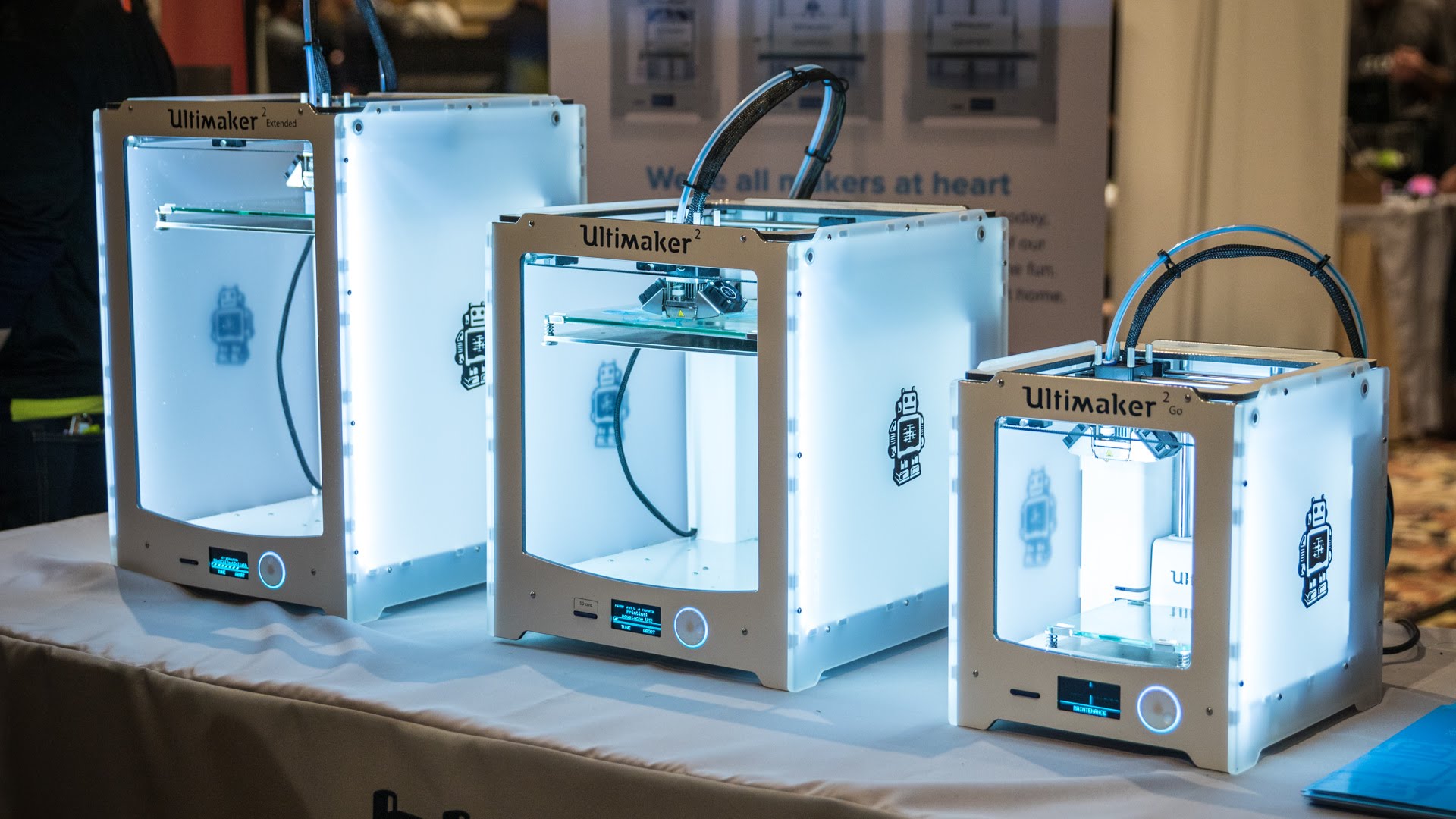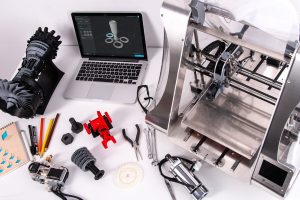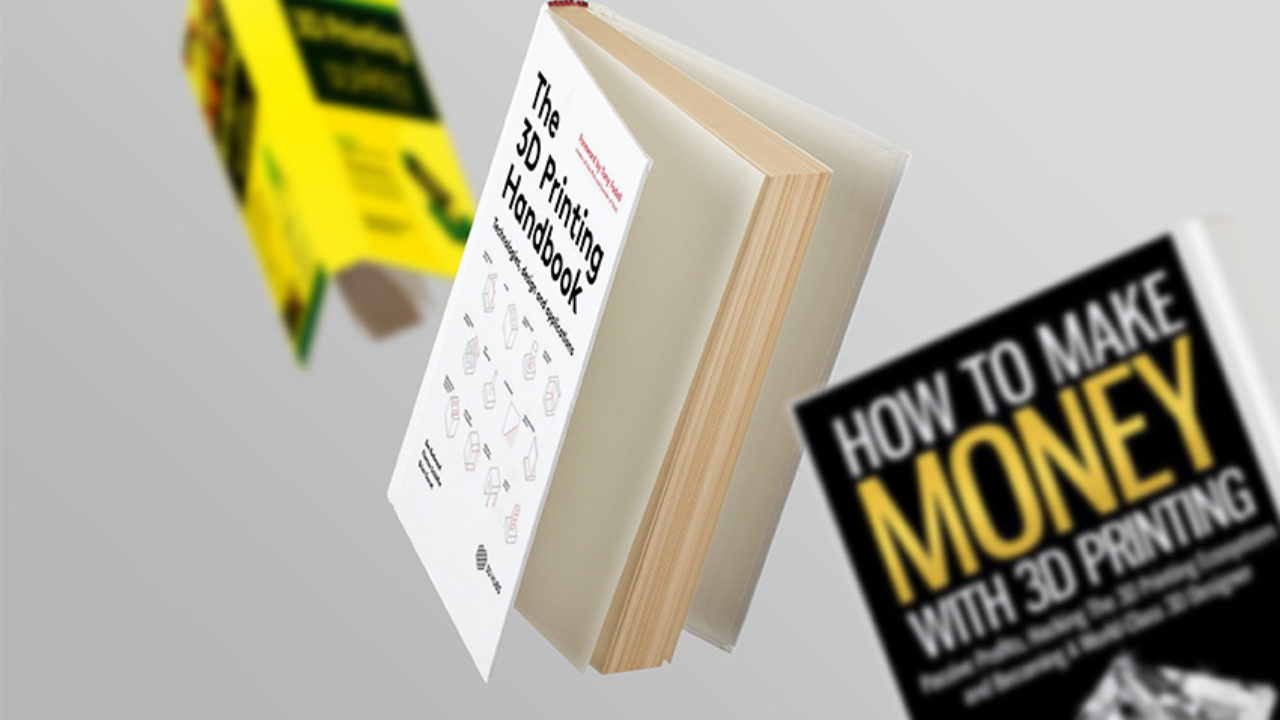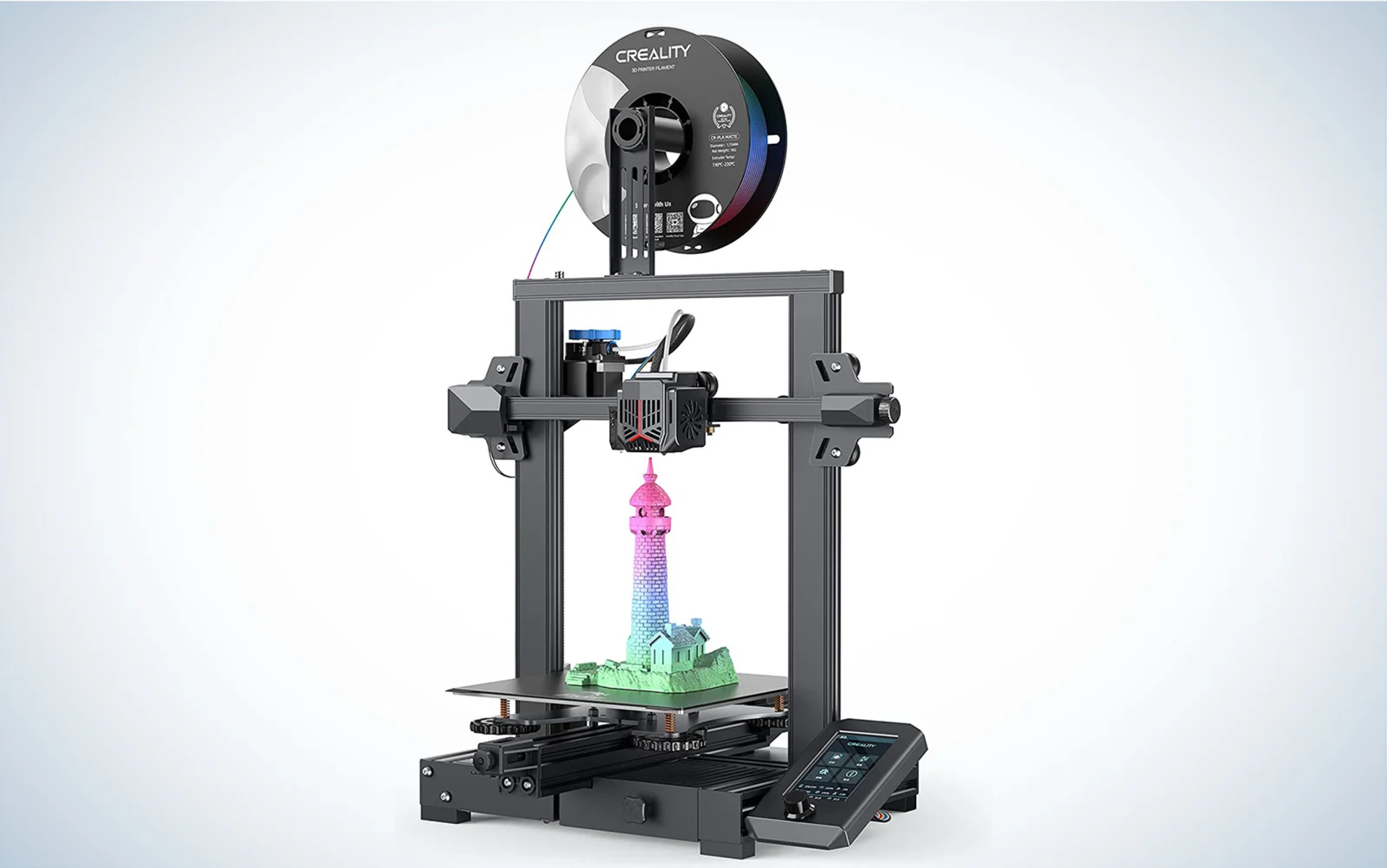Introduction
3D printing technology has rapidly evolved over the years, bringing a wealth of possibilities and opportunities for individuals and businesses alike. Gone are the days when 3D printing was considered a niche technology; today, it is becoming increasingly accessible and affordable for enthusiasts and professionals alike. With a 3D printer, you can transform digital designs into tangible objects layer by layer, creating everything from intricate prototypes to customized home decor.
This article explores the numerous benefits of owning a 3D printer and highlights why investing in this technology can be a game-changer in terms of creativity, cost savings, learning, and access to unique designs. Whether you are a hobbyist, an entrepreneur, or an educator, the advantages of 3D printing are numerous and diverse.
By delving into the world of 3D printing, you unlock incredible opportunities to bring your imagination to life, empower your business, and discover new avenues of self-expression. Let’s explore the remarkable benefits that await you on this exciting journey.
Benefits of Owning a 3D Printer
Owning a 3D printer opens up a whole new world of possibilities and advantages. Here are some of the key benefits:
- Creative Possibilities: With a 3D printer, you have the power to turn your wildest ideas into reality. Whether you’re an artist, a designer, or simply someone with a creative mind, owning a 3D printer allows you to bring your imagination to life by transforming digital models into tangible objects. From intricate sculptures to functional prototypes, the only limit is your creativity.
- Customization and Personalization: One of the greatest advantages of 3D printing is the ability to create highly personalized and customized objects. Whether it’s a one-of-a-kind piece of jewelry, a personalized phone case, or even a tailored prosthetic limb, a 3D printer empowers you to design and produce items that perfectly suit your needs and preferences.
- Cost Savings: While the initial investment in a 3D printer may seem significant, it can actually result in long-term cost savings. Traditional manufacturing methods often involve high setup costs, especially for small-scale production. With a 3D printer, you can manufacture products on demand, eliminating the need for large inventory and reducing production costs in the long run.
- Learning Opportunity: Owning a 3D printer offers a valuable learning experience, especially for students, hobbyists, and DIY enthusiasts. By exploring the technology, working with different materials, and experimenting with designs, you develop essential skills in CAD (Computer-Aided Design), problem-solving, and critical thinking. It provides a hands-on approach to learning engineering principles and encourages innovation.
- Accessibility to Unique Designs: With a 3D printer, you have access to a vast library of digital designs available online. From websites like Thingiverse to community forums, you can find an incredible range of pre-designed objects that you can print right away. This accessibility to unique designs enables you to create objects that were once only imaginable.
- Producing Prototypes: For entrepreneurs, inventors, and engineers, 3D printing offers a cost-effective method for producing prototypes. It allows you to quickly iterate and refine your designs, reducing the time and expense associated with traditional prototyping methods. With this capability, you can bring your ideas to life faster and more efficiently.
- Enhanced Education and Professional Development: Educational institutions and professional industries are increasingly incorporating 3D printing into their curriculum and practices. By owning a 3D printer, you can gain a competitive edge in these fields, building valuable skills that can enhance your educational path or professional career.
- Environmental Sustainability: 3D printing offers environmental benefits such as reduced waste and energy consumption compared to traditional manufacturing methods. With precise material usage, you can minimize waste and use eco-friendly materials, promoting sustainability in your production process.
With these benefits in mind, it’s clear that owning a 3D printer can revolutionize the way you create, customize, and innovate. Let’s explore these advantages further and delve into the specific applications and impact of 3D printing in various industries.
Creative Possibilities
One of the most exciting aspects of owning a 3D printer is the endless creative possibilities it offers. This technology allows you to bring your imagination to life and push the boundaries of what is possible. Whether you are an artist, a designer, or simply someone with a passion for creating, a 3D printer can revolutionize the way you express yourself and explore new ideas.
With a 3D printer, you have the freedom to design and manufacture objects that were once only possible in your dreams. From intricate sculptures to functional prototypes, the only limit is your creativity. You can create decorative items like unique lampshades, personalized figurines, or even custom jewelry that perfectly reflects your style.
Moreover, 3D printing allows you to experiment with a wide range of materials, including plastics, metals, and even food. This means you can explore new textures, colors, and finishes, adding a new dimension to your creations. Whether you want to create a colorful piece of artwork or a functional object with precise mechanical parts, a 3D printer gives you the tools to bring your vision to life.
Another exciting aspect of 3D printing is the ability to combine different elements to create hybrid objects. For example, you can print a basic structure using one material and then add intricate details using a different material. This opens up a whole new world of possibilities for creating complex and visually stunning objects that were once challenging or impossible to produce.
Furthermore, owning a 3D printer encourages you to think outside the box and embrace innovative design approaches. Instead of relying on traditional manufacturing methods, which often come with limitations, you can explore unconventional shapes, structures, and textures. This gives you the freedom to design objects that stand out and capture attention.
Whether you are a professional designer looking to push the boundaries of your field or a hobbyist eager to explore new creative outlets, a 3D printer is a powerful tool that can unlock a world of possibilities. The ability to turn digital designs into physical objects allows you to see your ideas come to life in a tangible form, fostering a sense of accomplishment and fulfillment.
With the creative possibilities offered by a 3D printer, you can truly let your imagination soar and bring the extraordinary into reality. The next section explores how 3D printing enables customization and personalization, allowing you to create objects that are uniquely tailored to your needs and preferences.
Customization and Personalization
One of the most significant advantages of owning a 3D printer is the ability to customize and personalize objects to your exact preferences. With traditional manufacturing methods, customization often comes at a high cost or is simply not feasible. However, 3D printing changes the game by allowing you to create unique and personalized items with ease.
Whether you want to create a one-of-a-kind piece of jewelry, a customized phone case, or a personalized gift for a loved one, a 3D printer gives you the power to design and produce objects that reflect your individuality. You can modify existing designs or create your own from scratch, tailoring every aspect to suit your tastes and needs.
Furthermore, 3D printing enables you to create objects with personalized features, making them more functional and tailored to specific requirements. For example, you can design a custom prosthetic limb that fits perfectly and improves comfort and mobility. You can also create ergonomic handles for tools or other objects, ensuring they are comfortable to use and tailored to your grip.
Another area where customization and personalization shine is in the world of home decor. With a 3D printer, you can create unique and eye-catching pieces that match your interior design style perfectly. From decorative vases and lampshades to intricate wall art and personalized photo frames, you can transform your living space into a reflection of your personality and taste.
Additionally, 3D printing allows you to customize objects for specific purposes or individuals. For example, you can design and print personalized medical devices that are tailored to the unique needs of patients, ensuring a better fit and improved effectiveness. Similarly, you can create customized educational aids or assistive devices for individuals with special needs.
The ability to customize and personalize objects goes beyond aesthetics and functionality. It also adds sentimental value and emotional connection. By designing and printing personalized gifts for your loved ones, you demonstrate thoughtfulness and create lasting memories. Whether it’s a customized piece of jewelry with a special inscription or a unique home decor item with personal significance, these objects hold a deeper meaning.
3D printing opens up a world of possibilities for personalization and customization. Whether you are looking to express your individuality, improve functionality, or create meaningful gifts, a 3D printer empowers you to bring your ideas to life in a way that is uniquely yours. The next section explores the cost-saving benefits of owning a 3D printer.
Cost Savings
While the initial investment in a 3D printer may seem significant, owning one can actually result in long-term cost savings. Traditional manufacturing methods often involve high setup costs, especially for small-scale production. However, with a 3D printer, you can manufacture products on demand, eliminating the need for large inventory and reducing production costs.
One of the major cost-saving benefits of 3D printing is the ability to produce objects without the need for complex tooling or molds. Traditional manufacturing processes, such as injection molding, often require expensive molds that need to be created for each product. These molds can be costly and time-consuming to produce, especially for small production runs. With 3D printing, all you need is a digital design, and you can start manufacturing the object right away, without the need for any additional tooling.
Moreover, 3D printing allows for more efficient material usage. Traditional subtractive manufacturing processes, such as cutting or carving, generate a significant amount of waste material. However, with 3D printing, you only use the amount of material necessary to create the object, reducing waste and saving on material costs.
Additionally, 3D printing enables the consolidation of multiple parts into a single printed object. This can lead to cost savings in both material and assembly time. Instead of producing and assembling multiple parts, you can design a single, complex object that incorporates all the required features. This reduces the number of components needed and simplifies the assembly process, resulting in cost and time savings.
Furthermore, 3D printing allows for rapid prototyping, which can significantly reduce development costs. With traditional manufacturing, creating prototypes often involves a lengthy and expensive process. Changes and iterations can be time-consuming and costly, especially if new molds or tooling are required. However, with a 3D printer, you can quickly iterate designs and produce prototypes in-house, reducing the time and cost associated with traditional prototyping methods.
Overall, owning a 3D printer can result in substantial cost savings in the long run. The ability to manufacture products on demand, eliminate costly tooling and molds, reduce material waste, and streamline the prototyping process leads to increased efficiency and cost-effectiveness. Whether you’re a small business looking to optimize production costs or an individual seeking to create customized objects without breaking the bank, 3D printing offers significant financial advantages.
The next section explores how owning a 3D printer can provide valuable learning opportunities and enhance personal and professional development.
Learning Opportunity
Owning a 3D printer provides a valuable learning opportunity, whether you are a student, a hobbyist, or simply someone eager to expand your knowledge and skills. This technology offers a hands-on approach to learning, allowing you to explore various aspects of design, engineering, and manufacturing.
One of the key areas where 3D printing offers a learning opportunity is in Computer-Aided Design (CAD). CAD software allows you to create digital models that can be transformed into physical objects through 3D printing. By learning CAD skills, you gain a valuable tool for designing and prototyping, enabling you to bring your ideas to life. Understanding CAD principles can have wide-ranging applications beyond 3D printing, ranging from architecture and engineering to product design and animation.
In addition to CAD, 3D printing encourages problem-solving and critical thinking skills. The process of designing and printing objects requires you to analyze and overcome various challenges, such as optimizing designs for printing, ensuring structural integrity, and selecting the right materials. Through experimentation and iterative learning, you develop the ability to find creative solutions and overcome obstacles.
Another aspect of learning with a 3D printer is the exploration of different materials and their properties. Each material used in 3D printing has its unique characteristics, such as strength, flexibility, or transparency. By experimenting with different materials, you gain a deeper understanding of their properties and learn how to leverage them for specific applications. This knowledge can be applied to other areas where materials play a crucial role, such as manufacturing, engineering, or product development.
Furthermore, owning a 3D printer provides a platform for continuous learning and exploration. The 3D printing community is vibrant and supportive, with online forums, tutorials, and resources readily available. Engaging with the community allows you to connect with like-minded individuals, share knowledge, and learn from experienced practitioners. By tapping into this network, you can expand your understanding of 3D printing techniques, software tools, and innovative applications.
For students and educators, 3D printing offers a valuable tool for enhancing STEM education. It provides a practical means to explore concepts in engineering, physics, and design. Students can apply their theoretical knowledge to real-world scenarios, designing and manufacturing objects that solve specific problems or demonstrate scientific principles. This hands-on approach fosters creativity, critical thinking, and problem-solving skills, preparing students for future careers in fields such as engineering, product design, and manufacturing.
Overall, owning a 3D printer opens up a world of learning opportunities. Whether you’re developing practical skills in CAD design, problem-solving, or understanding materials, the experience gained from working with a 3D printer can have a lasting impact on personal and professional development. The next section explores how owning a 3D printer provides access to a wide range of unique designs and expands your creative possibilities.
Accessibility to Unique Designs
Owning a 3D printer grants you access to an extensive library of unique and diverse digital designs, unlocking a world of creativity and possibilities. From intricate models to functional objects, the availability of pre-designed files online makes it easier than ever to find and print objects that align with your interests and needs.
Websites like Thingiverse, Cults, and MyMiniFactory offer a vast collection of 3D printable designs contributed by a global community of designers and enthusiasts. These platforms allow you to browse through categories ranging from art and fashion to technology and home decor. With just a few clicks, you can find and download inspiring designs for your next 3D printing project.
Moreover, many of these platforms enable users to contribute their designs, fostering a collaborative and creative environment. This means that you not only have access to a wealth of existing designs but also have the opportunity to share your own creations with others. By participating in this community, you can learn from others, receive feedback on your designs, and contribute to the growing repository of 3D printable models.
The accessibility of unique designs extends beyond websites dedicated exclusively to 3D printing. Designers and artists from various disciplines are increasingly embracing 3D printing as a medium for their creations. This has led to the emergence of platforms and marketplaces where you can discover specialized designs tailored to specific niches or industries.
For example, if you’re interested in jewelry, you can find intricate and stunning designs specifically made for 3D printing. These designs often feature intricate details and are optimized for printing with precision. Similarly, if you’re a tabletop gaming enthusiast, you can find a plethora of 3D printable models of characters, terrain, and game accessories that can enhance your gaming experience.
With accessibility to unique designs, you can push the boundaries of your creativity and explore new avenues of expression. You can personalize and modify these designs to suit your preferences or use them as a source of inspiration for your own creations. The availability of such designs allows you to focus on refining your printing skills and experimenting with different materials and settings.
Whether you’re a hobbyist, a designer, or an entrepreneur, the accessibility to unique and diverse 3D printable designs gives you an incredible advantage. It enables you to find inspiration, learn from the work of others, and transform digital concepts into tangible objects. The next section explores how owning a 3D printer can be instrumental in producing prototypes quickly and cost-effectively.
Producing Prototypes
One of the most significant advantages of owning a 3D printer is the ability to produce prototypes quickly and cost-effectively. In the past, creating prototypes often involved lengthy and expensive processes, but 3D printing has revolutionized this aspect of product development.
With a 3D printer, you can turn your digital designs into physical prototypes in a fraction of the time compared to traditional manufacturing methods. This rapid prototyping capability allows for faster iteration and refinement, enabling you to bring your ideas to life and test them more efficiently.
Traditionally, prototyping involved outsourcing the manufacturing process to specialized companies or setting up costly in-house facilities. However, with a 3D printer, you have full control over the entire prototyping process. Instead of waiting for external suppliers or dealing with lengthy production lead times, you have the freedom to create prototypes in your own space, on your own schedule.
3D printing also offers cost advantages when it comes to prototyping. Traditional prototyping methods often require expensive tooling, molds, and machinery, making the process costly, especially for small-scale production runs. However, with 3D printing, you eliminate the need for such tooling and molds, reducing both setup costs and material waste.
Furthermore, 3D printing enables you to iterate on your designs more easily and at a lower cost. Rather than making changes to molds or machinery, you can make adjustments to the digital design file and print a new prototype within a short period. This agility allows you to test multiple design iterations and explore different options without significant time or financial investment.
Another benefit of using 3D printing for prototyping is the ability to create complex geometries and intricate details that may be challenging or impossible with traditional manufacturing methods. With 3D printing, you can produce prototypes with intricate features, internal structures, and custom shapes more easily, allowing for more accurate representation of your final product.
By using 3D printing for prototyping, you can gather valuable feedback from stakeholders, make necessary design modifications, and validate your product concept before moving forward with mass production. This iterative process reduces the risk of costly errors or design flaws, ultimately saving time and money in the long run.
Whether you’re a product designer, an engineer, or an entrepreneur, 3D printing provides an invaluable tool for efficiently producing prototypes. It gives you the power to iterate rapidly, test ideas, and refine designs at a fraction of the cost and time compared to traditional methods. The next section explores how owning a 3D printer can enhance education and professional development opportunities.
Enhanced Education and Professional Development
Owning a 3D printer offers numerous opportunities for enhanced education and professional development. The technology has become increasingly integrated into educational institutions and professional industries, providing valuable hands-on learning experiences and opening doors to new possibilities.
In educational settings, 3D printing is being utilized to enhance STEM (Science, Technology, Engineering, and Mathematics) education. By incorporating 3D printers into the curriculum, students gain practical experience in design thinking, problem-solving, and critical analysis. They have the chance to apply theoretical concepts to real-world applications, fostering creativity, innovation, and teamwork.
With a 3D printer, students can visualize abstract concepts more tangibly. They can create models of complex structures, prototypes of inventions, or visual aids for learning. This hands-on approach to education stimulates curiosity and engagement, helping students develop a deeper understanding of concepts and their practical applications.
Furthermore, 3D printing provides an opportunity for collaboration and interdisciplinary learning. Students from different disciplines, such as engineering, design, and art, can work together to create innovative solutions or explore new avenues of creativity. This interdisciplinary collaboration mirrors real-world scenarios, preparing students for future careers where multidisciplinary teamwork is vital.
For professionals, owning a 3D printer can enhance skill sets and expand professional opportunities. Designers, engineers, and architects can explore new design possibilities, iterate on concepts, and produce accurate prototypes more efficiently. This ability to rapidly create physical models fosters faster development cycles and improves the quality of product designs.
Additionally, 3D printing can be used as a tool for professional development and lifelong learning. Professionals can stay up-to-date with the latest trends and techniques by engaging with the 3D printing community, attending workshops, or participating in online courses. This continuous learning allows individuals to improve their technical skills, broaden their knowledge, and adapt to a rapidly evolving industry.
Entrepreneurs can also benefit from owning a 3D printer. It allows them to bring their ideas to life, create prototypes, and test the feasibility of their products before seeking external funding or investing in large-scale production. This iterative process can save both time and money, increasing the chances of success for their ventures.
Moreover, having hands-on experience with 3D printing technology can be a valuable asset in various professional fields such as architecture, manufacturing, healthcare, and automotive industries. Job seekers who possess 3D printing skills may have a competitive edge, as this technology becomes more prevalent across industries.
Owning a 3D printer can provide individuals with enhanced education and professional development opportunities. From STEM education in schools to career advancement and innovation in industries, the adoption of 3D printing offers invaluable experiences and skills. The next section explores how 3D printing promotes environmental sustainability and responsible manufacturing practices.
Environmental Sustainability
3D printing technology has the potential to contribute to environmental sustainability and responsible manufacturing practices. Compared to traditional manufacturing methods, 3D printing offers several advantages that reduce waste, energy consumption, and environmental impact.
One significant aspect of sustainability in 3D printing is material efficiency. Traditional manufacturing methods often result in significant material waste due to subtractive processes, where excess material is cut away or carved out. In contrast, 3D printing is an additive manufacturing process that only uses the necessary amount of material to create an object, minimizing waste. This efficiency not only reduces the environmental burden but also saves on material costs.
Furthermore, 3D printing allows for the use of recycled or eco-friendly materials. Many filaments used in 3D printing are made from recycled plastics or bio-based materials, reducing the dependence on virgin materials and diminishing the environmental impact of manufacturing. By using these sustainable materials, 3D printing supports the principles of a circular economy and responsible resource management.
In addition, 3D printing enables localized manufacturing and distributed production. This approach reduces the need for long-distance transportation of goods, resulting in lower carbon emissions associated with logistics. Rather than manufacturing products in one centralized location and shipping them worldwide, 3D printing allows for on-demand production in localities where products are needed, reducing transportation and associated environmental costs.
Moreover, 3D printing enables the creation of lightweight and optimized designs. The ability to print complex structures and hollow objects allows for the reduction of material usage while maintaining strength and functionality. This lightweight design approach not only conserves resources but also contributes to energy savings during transportation and usage of the printed objects.
Additionally, 3D printing empowers individuals and businesses to repair and maintain products, promoting a shift from a throw-away culture to a more sustainable mindset. With the ability to print replacement parts or repair damaged components, 3D printing extends the lifespan of products, reducing the volume of waste going to landfills. This approach aligns with the principles of a circular economy, focused on reducing waste, reusing resources, and prolonging product life cycles.
Overall, 3D printing holds the potential to contribute to environmental sustainability by reducing waste, utilizing sustainable materials, enabling localized production, and promoting responsible resource management. By adopting responsible manufacturing practices, 3D printing can play a role in transitioning towards a more sustainable and environmentally conscious future.
The next section concludes the article by summarizing the key benefits of owning a 3D printer and emphasizing the transformative impact it can have on creativity, customization, cost savings, education, and sustainability.
Conclusion
Owning a 3D printer opens up a world of possibilities and advantages. From unleashing your creativity to customizing and personalizing objects, the benefits of owning a 3D printer are vast and diverse. With this technology, you have the power to transform digital designs into tangible objects that showcase your imagination and individuality.
Not only does owning a 3D printer offer creative possibilities, but it also brings cost savings. By eliminating the need for expensive molds and tooling, reducing material waste, and allowing for rapid prototyping, 3D printing offers a cost-effective manufacturing solution. Whether you’re a small business aiming to optimize production costs or an individual seeking to create customized objects economically, a 3D printer can revolutionize your approach.
3D printing also provides valuable learning opportunities, allowing for hands-on exploration of design principles, problem-solving skills, and understanding of materials. From students enhancing their STEM education to professionals expanding their skill sets, the ability to learn and grow with a 3D printer is invaluable. It offers continuous learning potential and career development in various industries.
Furthermore, owning a 3D printer grants you accessibility to unique designs from an extensive online library. Whether you’re seeking inspiration or looking for specific designs tailored to your interests and needs, platforms like Thingiverse enable you to find an array of objects to print and customize. This access to unique designs fuels your creativity and expands the range of objects you can create.
Lastly, 3D printing promotes environmental sustainability by reducing waste through material efficiency, utilizing recycled or eco-friendly materials, enabling localized manufacturing, and encouraging repair and maintenance practices. It aligns with the principles of responsible manufacturing and supports the transition towards a more sustainable future.
In conclusion, owning a 3D printer offers a transformative opportunity to unlock your creativity, customize objects, save costs, enhance education, and contribute to a more sustainable world. Whether you’re an artist, a designer, an educator, or an entrepreneur, a 3D printer empowers you to bring your ideas to life and make a lasting impact.







